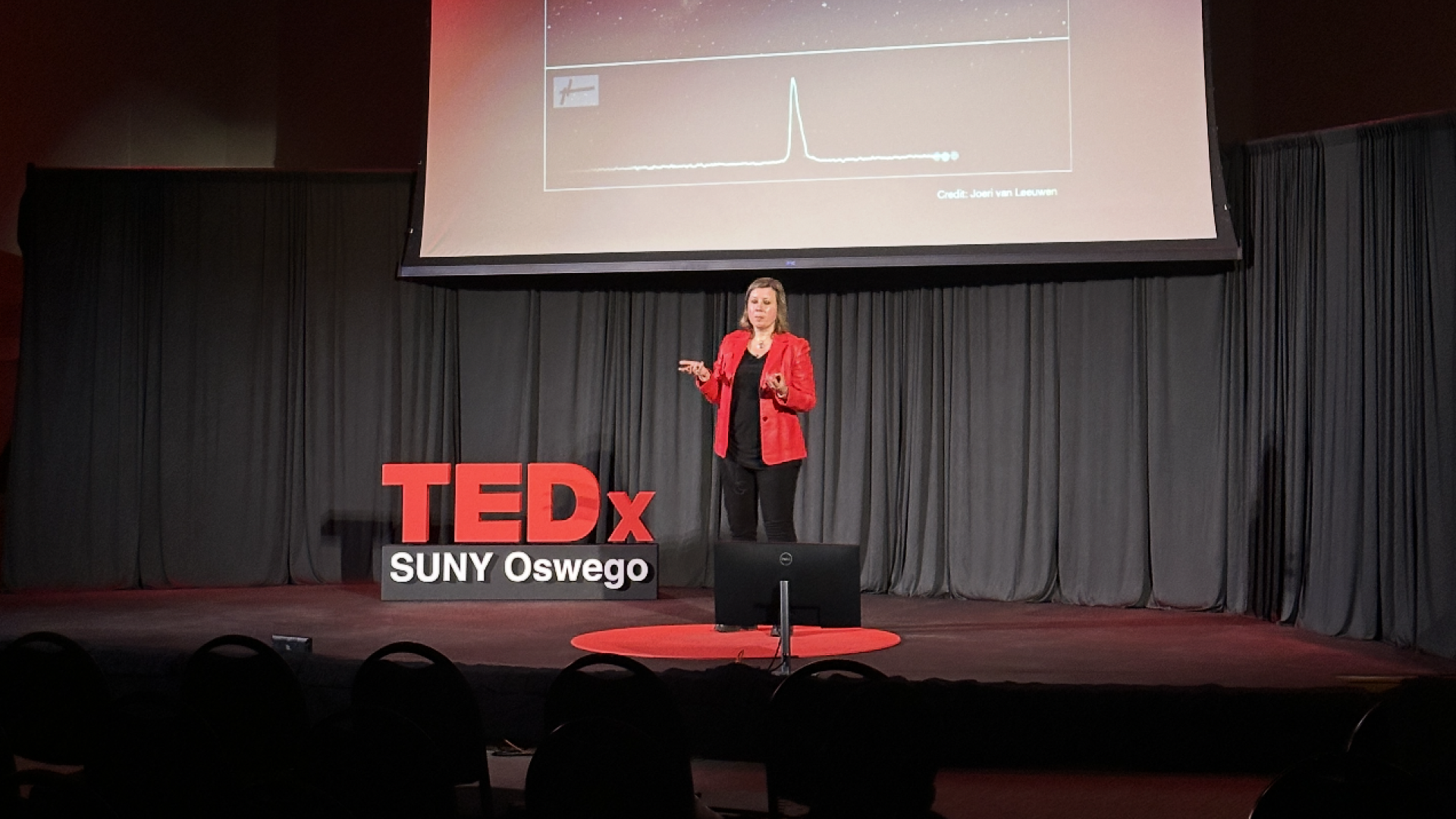Dr. Natalia Lewandowska is an Assistant Professor of Physics and Astronomy and Director of the Shineman Planetarium at SUNY Oswego. A lifelong astronomy enthusiast, she specializes in stellar astrophysics and has conducted observational research using world-class telescopes across Europe and the U.S., including the Green Bank Telescope. Passionate about science education and outreach, she has led national programs like the Pulsar Science Collaboratory and continues to inspire students and the public through teaching, research, and planetarium events.

Dr. Natalia Lewandowska
I get my best scientific ideas after 10 pm.
Biography
Natalia Lewandowska, an Assistant Professor of Physics and Astronomy and Shineman Planetarium Director at SUNY Oswego,
has been interested in the field of Astronomy and Astrophysics since the age of 5. Born in the same town as Nicolaus Copernicus who was the first astronomer to set up a heliocentric view of our Solar System, Natalia pursued the field of observational astronomy from an early age on observing stars, planets, moons and galaxies with an amateur optical telescope. An avid lover of photography she also dived into the field of astrophotography. Interested in all topics in the field of astronomy she was a frequent visitor of the local planetarium. At the age of 10 she decided to become a professional astronomer and obtained her academic degrees from the University of Hamburg and Wuerzburg in Germany. Enthralled by the question how stars shine, her projects focused on the physics of different types of stars. They gave her the opportunity to observe such stars with professional optical, radio and gamma-ray telescopes in Greece, Spain and the Netherlands.
After obtaining her PhD in 2015 Natalia accepted a postdoctoral position at the National Radio Astronomy Observatory in Green Bank, WV where she continued her studies with the Green Bank Telescope, the largest fully steerable radio telescope worldwide.
Natalia has been a passionate participant of public outreach since her time as an undergraduate student. During her time in Green Bank she got in touch with the Pulsar Science Collaboratory (PSC), an astronomy education program which offers high school students at US schools the opportunity to search for stars that are referred to as pulsars in data taken with the Green Bank Telescope. Inspired by the experience of working on projects with students participating in the PSC, she accepted her second postdoctoral position at West Virginia University where became the project director for the PSC.
Discovering her passion for explaining phenomena in the field of physics and astronomy (the more complicated the phenomenon, the bigger the challenge), she accepted visiting assistant professor positions at Haverford and Swarthmore College where she taught physics and astronomy classes and worked with undergraduate students on individual research projects.
In 2022 she accepted her current position at SUNY Oswego where she teaches Physics and Astronomy classes, works on her research with regularly welcomes everyone who likes to learn more about astronomy at the Shineman Planetarium.
Expertise or credibility the topic
Natalia has been working in the field of pulsar and neutron star astrophysics since her time as a PhD student at the University of Wuerzburg. She studied the famous Crab pulsar at radio wavelengths and gamma-rays using some of the largest telescopes world wide. To obtain time with these telescopes she wrote multiple successful proposals. She carried out parts of radio and gamma-ray observations herself while staying on site. As a postdoctoral fellow she started working on NASA's Neutron Star Interior Composition ExploreR (NICER) mission which is used to study different types of neutron stars at X-rays and became a member of the NICER Collaboration. That way she enlarged her studies of the Crab pulsar also towards X-rays. Around the same time she joined the North American Nanohertz Observatory for Gravitational Waves (NANOGrav), which is a consortium of scientists from the US and Canada who carry out regular observations of a set of pulsars in the Milky Way and search for time deviations in their signals as an indicator for passing gravitational waves. As part of the NANOGrav collaboration she is leading the Noise Budge Working group as chair and is involved in timing pulsars. She is also a co-chair of the Education and Public Outreach Working Group and as such co-organizes various activities of the collaboration.
Natalia is an international expert in the study of single radio pulses known as giant pulses. Such pulses are very bright and not periodical.She has studied pulsars with that kind of emission at radio wavelengths, X-rays and gamma-rays and wants to extend her experience also towards infrared wavelengths in the future.